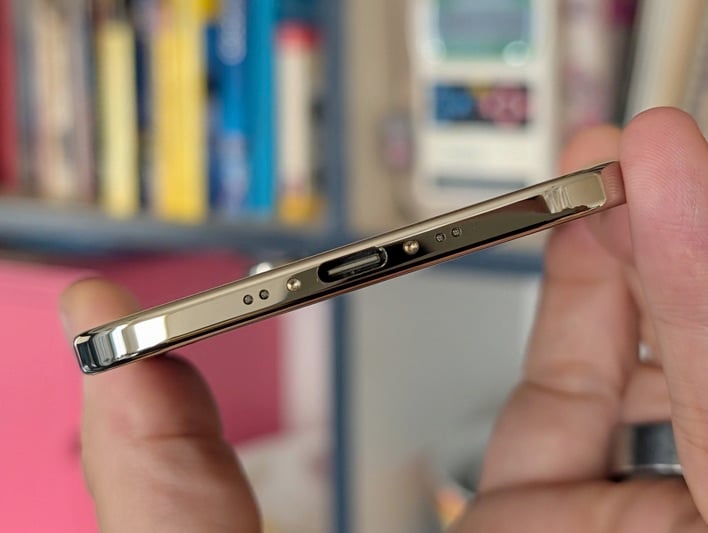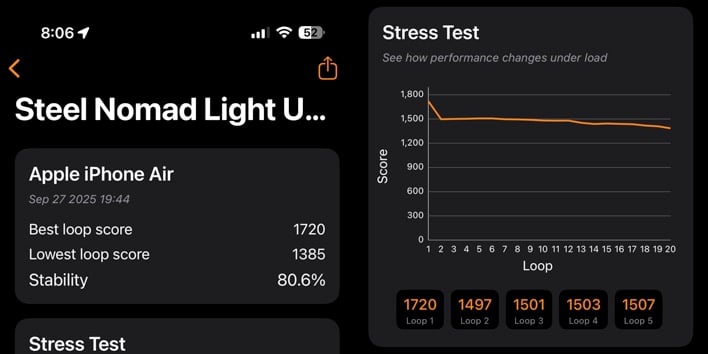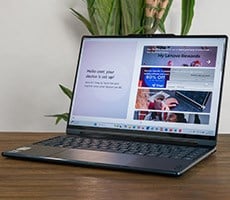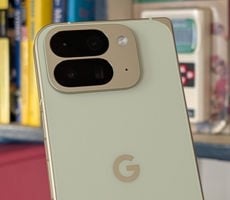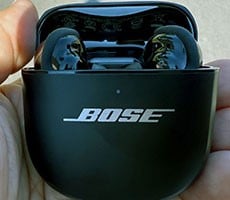iPhone Air Review: Apple’s Slimmest iPhone Is A Design Triumph With Tradeoffs
iPhone Air Reception And Sound Quality
As previously mentioned, the iPhone Air is the first phone to be eSIM-only worldwide, so I needed some eSIMs. I contacted all three US carriers and requested eSIMs for testing. Special thanks to AT&T for activating an eSIM in a matter of hours, and to Verizon and T-Mobile for providing eSIMs within a couple days. I ran speed tests on all three US carriers in multiple locations and didn’t experience any issues.Apple advertises the C1x 5G modem as being two times faster than the C1 chip in the iPhone 16e, while also being 30% more efficient than the Qualcomm 5G modem in last year’s iPhone 16 Pro. While I wasn’t able to verify these claims, cellular network performance was rock solid in my testing. The iPhone Air also features Apple’s new in-house N1 chip, which handles WiFi 7, Bluetooth 6, and Thread connectivity.
As you’d expect, the iPhone Air lacks a headphone jack (those days are long gone), but it supports wireless audio over Bluetooth (SBC and ACC codecs only) and via WiFi (AirPlay), plus wired audio through USB (digital accessories only). Strangely, Apple still doesn’t offer LDAC, LHDC, and aptX HD/lossless Bluetooth codecs on any iPhone, which is unfortunate considering these are widely available on Android handsets.
iPhone Air Performance
The iPhone Air shares Apple’s flagship 3nm A19 Pro chip with the iPhone 17 Pro and 17 Pro Max. But instead of boasting six GPU cores like the Pro models, the iPhone Air’s A19 Pro SoC makes do with five GPU cores. Qualcomm does something similar with the Snapdragon 8 Elite, which is available in versions with seven or eight CPU cores. The iPhone Air pairs its A19 Pro chip with 12GB of RAM and 256GB, 512GB, or 1TB of storage.As you’d expect from a handset running Apple’s highly optimized iOS 26 on the company’s flagship A19 Pro SoC, the iPhone Air feels extremely quick and responsive in day-to-day tasks. I put it through a standard ringer of productivity, communication, social media, and entertainment apps and it never skipped a beat. I even played graphically demanding games like Genshin Impact and GRID Autosport without trouble.
Subjective performance is one thing, but the iPhone Air was no slouch running our usual collection of benchmarks (see below), except when running sustained workloads. It only managed a score of 52.4% in 3DMark’s Wildlife Unlimited stress test, which isn’t great. And while this isn’t really surprising, since the iPhone Air lacks the vapor chamber found on the iPhone 17 Pro and 17 Pro Max, I was expecting better results.
iPhone Air Geekbench 6 Results
GeekBench is a cross-platform benchmark that simulates real-world processing workloads in image processing and particle physics calculation scenarios. We tested all of the smartphones featured here with GeekBench's single and multi-core workloads.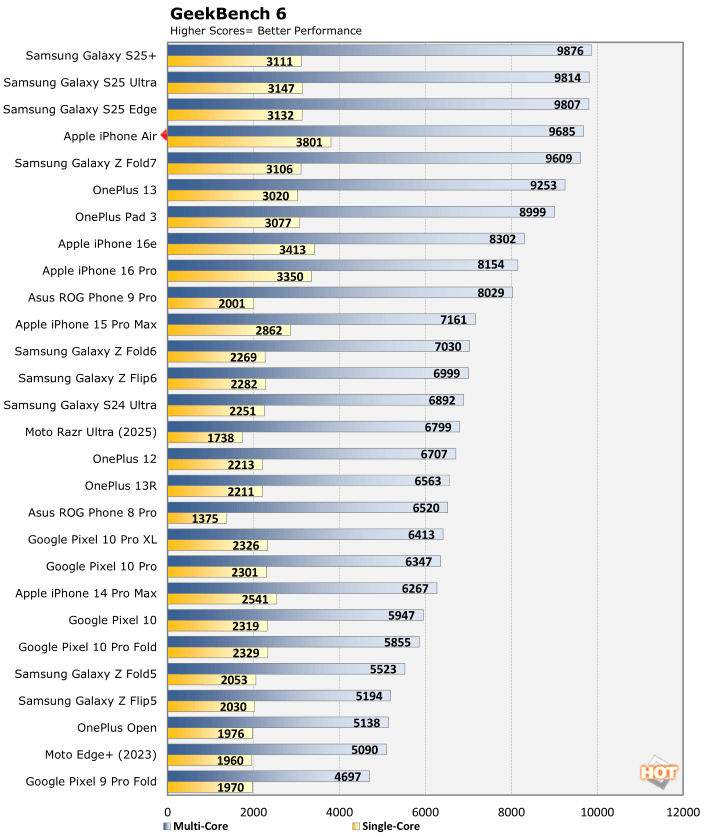
iPhone Air AnTuTu 8 Benchmarks
AnTuTu’s latest benchmark returns a number of metrics ranked with somewhat nebulous scores, rather than frame rates or time to complete. Here we're running the latest version of AnTuTu across multiple Android devices. AnTuTu returns four top level performance results which are all included here: CPU, RAM, 3D, UX (or User Experience), along with a total score.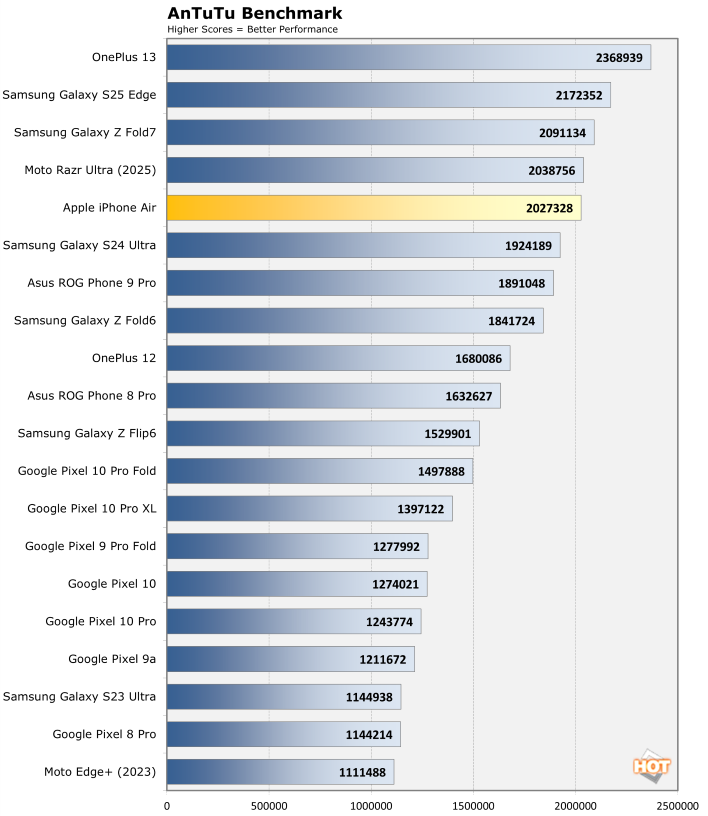
According to AnTuTu, the iPhone Air matches current Snapdragon 8 Elite-equipped Android flagships, slotting right below Motorola's Razr Ultra in terms of overall score.
iPhone Air Graphics And Gaming Benchmarks Results
Now, let's take a look at how the iPhone Air stacks up in GFXBench, which has been one of the standard mobile graphics/gaming performance benchmarks for years. To ensure that display refresh (v-sync) and resolution aren't limiting factors, we're comparing off-screen test results here. GFXBench tests graphics workloads using Apple's Metal API.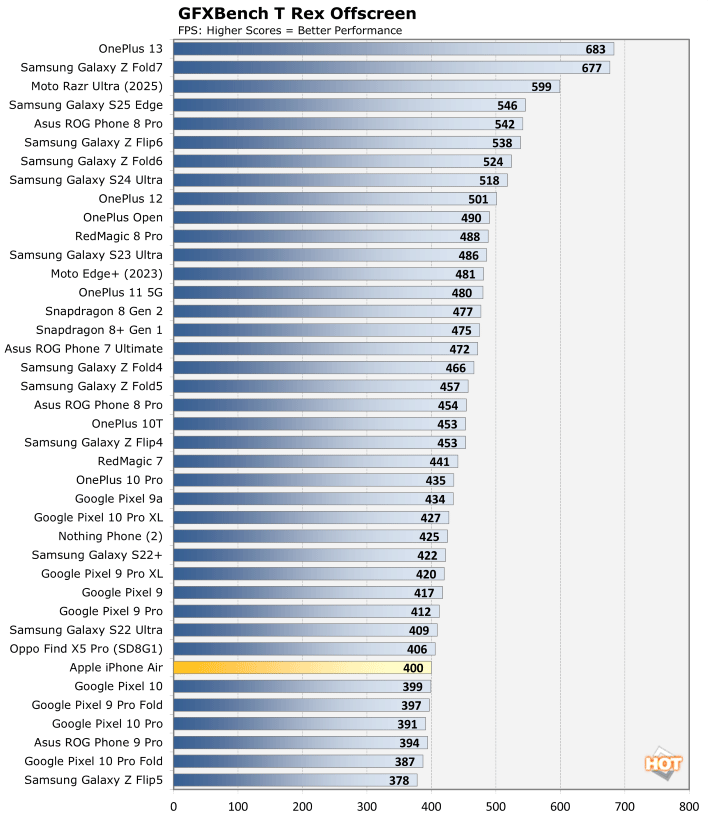
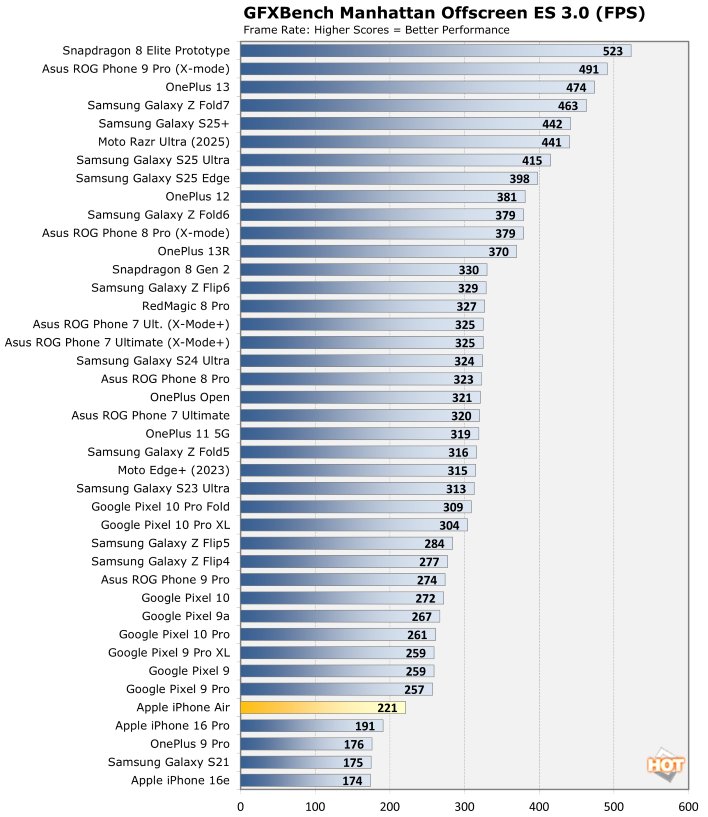
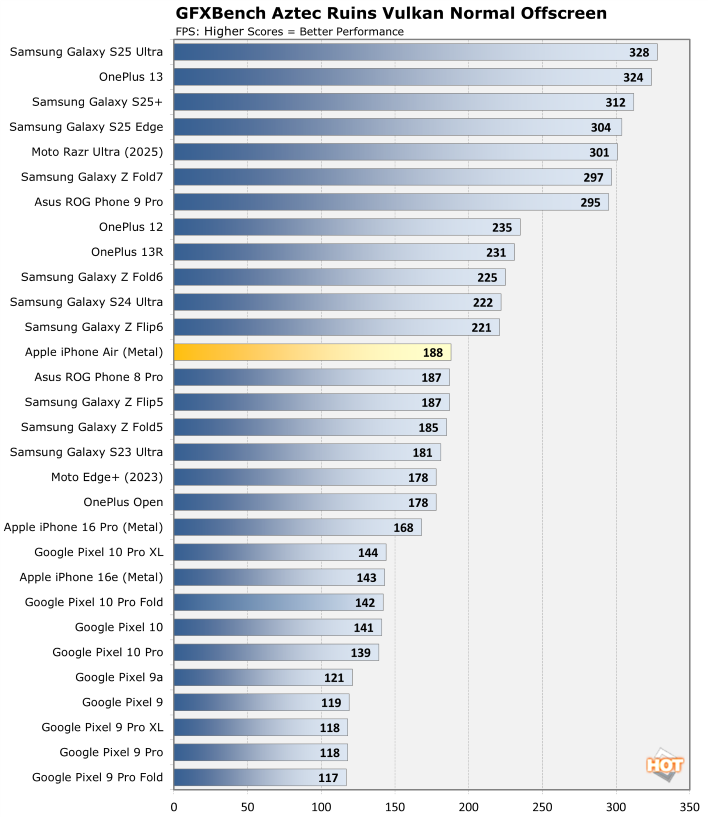
iPhone Air 3DMark Wild Life Benchmark Tests

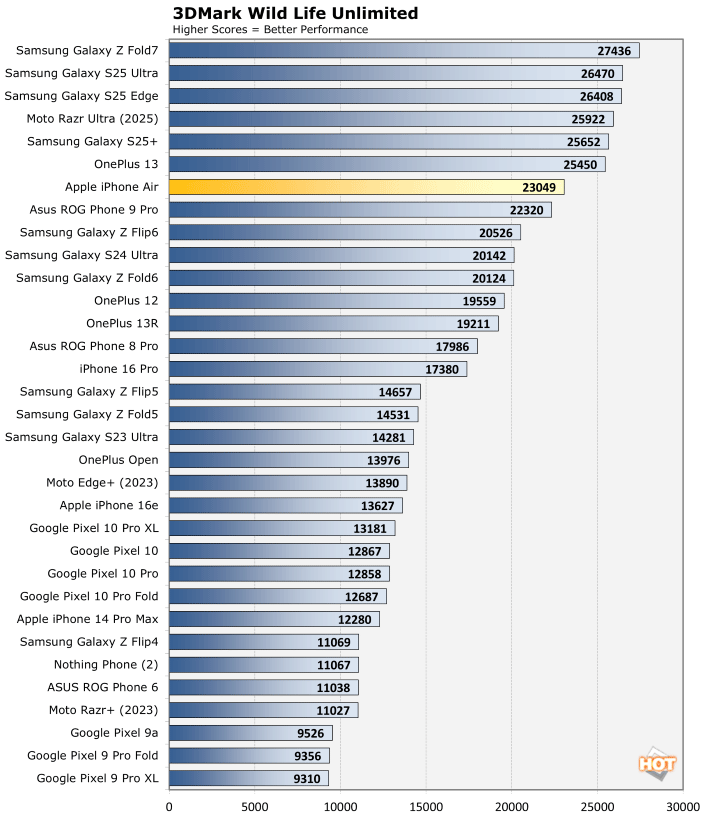
iPhone Air Additional Features And Battery Life
Lack of mmWave 5G aside, the iPhone Air’s specs match the rest of the iPhone 17 models, and include sub-6GHz 5G, 4G LTE, satellite SOS, WiFi 7 (802.11be), Bluetooth v6.0 + LE, Thread, NFC, UWB, plus dual-band A-GPS, GLONASS, Galileo, QZSS, BeiDou, and NavIC positioning. Haptics are top notch thanks to Apple’s Taptic Engine, and Face ID continues to be fast and reliable. Still, I’d love for iPhones to also have a fingerprint sensor.Battery life was my biggest concern when I started this review. At just 3,149mAh, the iPhone Air’s battery is tiny by modern standards, and considering that I regularly test Android phones with 6,000mAh+ silicon-carbon batteries that easily last two days on a charge and can be refilled at 80W+ wired, my expectations with the iPhone Air were low. But, while living with the iPhone Air was definitely an adjustment, I was pleasantly surprised.
Let’s make one thing abundantly clear: the iPhone Air’s battery life is a serious compromise. Apple should have used a larger capacity silicon-carbon cell. But, considering how small this battery is, the iPhone Air does a fantastic job in terms of power efficiency. Our PCMark battery test isn’t available for iOS, but in my experience, the iPhone Air does live up to Apple’s claim of all-day battery life, at least with normal use.
For reference, the iPhone Air’s battery life matches last year’s iPhone 16 Pro (non Max), which features a slightly larger 3,582mAh cell. That’s not too shabby. When it’s time for a refill, the iPhone Air charges at up to 20W wired (PD 2.0) and 20W wireless (Qi2-compatible). And despite being ultra slim, it includes the MagSafe magnets found on all modern iPhones (16e and SE models excepted) since the iPhone 12 series.

